Médico Veterinario Zootecnista egresado de la Universidad de Ciencias Aplicadas y Ambientales con formación Doctoral en curso en Ciencias Biomédicas y Biológicas de la Universidad del Rosario. El docente se ha desempeñado en el campo de la Medicina y Producción en bovinos con enfoque en la medicina poblacional preventiva, haciendo especial énfasis en enfermedades infectocontagiosas, zoonosis, epidemiologia aplicada y desarrollo de prototipos vacúnales para bovinos. Actualmente coordina el curso de Fundamentos de Medicina en Poblaciones en el programa de Medicina Veterinaria Zootecnia y ha participado en proyectos relacionados a las áreas de epidemiologia, enfermedades infecciosas, biología molecular e inmunología, destacándose en el desarrollo de vacunas químicamente sintetizadas y predictores in sillico de epitopes clase II en bovinos. Actualmente el profesor se encuentra vinculado al grupo de investigación en Ciencia Animal y participa en la formación de estudiantes dentro del semillero en biología molecular e inmunología Veterinaria de la Facultad de Ciencias Agropecuarias de la U.D.C.A. El Investigador tiene habilidades en la elaboración y análisis de textos en el idioma inglés.
GRUPOS DE INVESTIGACIÓN: CIENCIA ANIMAL
LÍNEAS DE INVESTIGACIÓN: Salud Humana y Animal y Sostenibilidad Ambiental
PROGRAMA: Medicina Veterinaria y Zootecnia
CATEGORÍA MINCIENCIAS:
NIVEL DE FORMACIÓN: Pregrado/Universitario
LINEAS DE TRABAJO: "Vacunas de nueva Generacion" "Biología Molecular" "Enfermedades Infecciosas" "Bovinos" "Complejo Mayor de Histocompatibilidad" "Predictores in silico" "Fiebre Aftosa"
PRODUCTOS DESTACADOS
Major Histocompatibility Complex Class II (DRB3) Genetic Diversity in Spanish Morucha and Colombian Normande Cattle Compared to Taurine and Zebu Populations
Fecha de publicación: 10/01/2020
Bovine leukocyte antigens (BoLA) have been used as disease markers and immunological
traits in cattle due to their primary role in pathogen recognition by the immune system. A
higher MHC allele diversity in a population will allow presenting a broader peptide repertoire.
However, loss of overall diversity due to domestication process can decrease a
population’s peptide repertoire. Within the context of zebu and taurine cattle populations,
BoLA-DRB3 genetic diversity in Spanish Morucha and Colombian Normande cattle was
analyzed and an approach to estimate functional diversity was performed. Sequencebased
typing was used for identifying 29, 23, 27, and 28 alleles in Spanish Morucha,
Nariño-, Boyacá-, and Cundinamarca-Normande cattle, respectively. These breeds had
remarkably low heterozygosity levels and the Hardy-Weinberg principle revealed significant
heterozygote deficiency. FST and DA genetic distance showed that Colombian Normande
populations had greater variability than other phenotypically homogeneous breeds, such as
Holstein. It was also found that Spanish Morucha cattle were strongly differentiated from
other cattle breeds. Spanish Morucha had greater divergence in the peptide-binding region
regarding other cattle breeds. However, peptide-binding region covariation indicated that
the potential peptide repertoire seemed equivalent among cattle breeds. Despite the
genetic divergence observed, the extent of the potential peptide repertoire in the cattle
populations studied appears to be similar and thus their pathogen recognition potential
should be equivalent, suggesting that functional diversity might persist in the face of
bottlenecks imposed by domestication and breeding.
Más información ⇨
- « Anterior
- 1
- …
- 8
- 9
- 10
- 11
- 12
- Siguiente »

